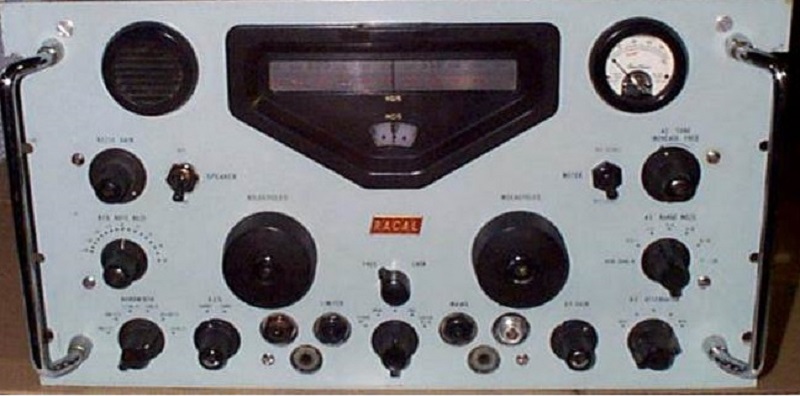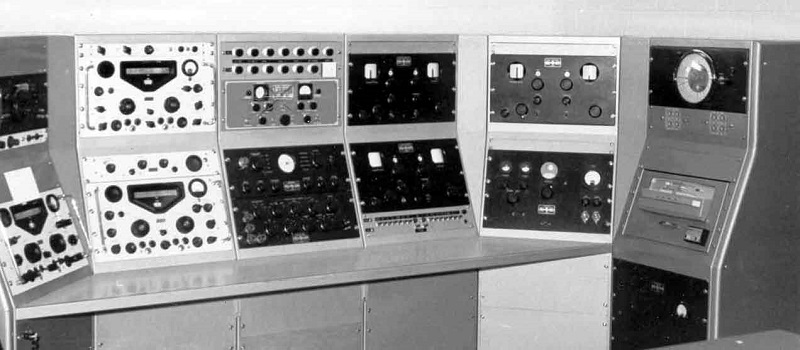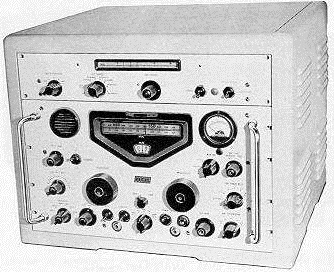
|
Spectrum Management - From the Early Years to the 1990s |
|
|
Page 13 of 26 Spectrum Surveillance and Monitoring - In Quebec |
|
|
Monitoring in Quebec
Beaumont Monitoring Station
The station at Beaumont was set up in 1954. The building was one that had been standardized for that type of installation in those days. On this subject, Ed Davey related that when he had been looking for an appropriate site, regardless of the size of the site visited between Lévis and Montmagny, the asking price had always been $3,500, or the amount that corresponded exactly to the funds allocated for the purchase of land ... (political organizers knew their friends ..).
The station was moved to St. Lambert de Lévis in 1965 when Hydro-Québec installed
735 kV power lines across the St. Lawrence River near the site, J.C. Mondou at the
helm. One of the operators' pleasures at Beaumont was to examine the monthly summary of reports of irregularities transmitted to the regional office for follow-up. The instructions were to verify anything that could be on any of the bands: to take appropriate
measurements of the frequencies and level of harmonic (multiple of the fundamental frequency) as the case
may be, ensure that the proper procedures were being followed (identification, message content, etc.), and
ensure that the stations were properly licensed as shown on the frequency lists that we had. This all had to be entered in the radio log: hours, identification, frequencies and verbatim content of
the transmissions if applicable. Some work assignments were quite interesting indeed.
These measurements were then transmitted to Ottawa where the measurements from all the stations
were co-ordinated. This frequency was used for a long time by Russia, even for the manned flights
Vostok 5 and 6, when the voice of the cosmonauts was heard, according to some reports. The monitoring stations also participated in various surveillance programs ordered by the International Telecommunication Union (ITU). One of them was to verify the use of bands reserved for the transmission of standard frequencies: 2.5, 5, 10, 15 and 20 MHz which were being used in the US by the station in Beltsville, Maryland (call sign WWV) at the time. We never found out why, but we could hear Spanish-language stations, especially on the 20 MHz frequency and, for a time, an Ethiopian station transmitting by radio teletype. Click here to see the history of WWV.
Another ITU campaign consisted in verifying whether countries respected the high frequency broadcasting schedule. This schedule changed four times a year, depending on the season, and details were provided to us in a thick report from the ITU. The report indicated the stations, transmission frequencies, times and zones for which the transmissions were destined. We had to verify whether the stations were really being heard, and on which frequencies, and provide a report of the signal received by using the SINPO signal reporting code. (S= signal strength, I= interference, N= noise, P= propagation and O= overall readability).
Because the stations identified themselves only at the beginning and end of a program, and the language used was not always French or English, we had to be able to identify them correctly. Every country had its own interval signal - in Canada's case, it was a few notes of the national anthem "Oh Canada" - so we had to memorize these "signals" to speed up the work because we wanted to cover as much of the schedule as possible. Click here to see some examples.
Beaumont - 1959 In Abitibi, a major air operator had purchased a hangar full of surplus radio sets from the Armed Forces and provided one to each of his clients - surveyors, mining explorers or fishermen - to facilitate the logistics of aircraft movement, ordering groceries, etc. It took many hours of monitoring and quite a few reports before the inspectors were able to rectify this situation.
We decided to modify an old NC100 receiver for use in a vehicle, with the wires hooked up to the car battery, a surplus dynamotor from the Army for the B+, and whip and loop antennas from an old radio receiver.
So off we went to Quebec City at noon every day, with OIC Jean Paul Gagnon, trying to find the location of each of the stations. Using the whip antenna first, as needed, by deactivating the automatic volume control and manipulating the HF control to get as close as possible, when the signal would become relatively strong, we would connect the loop antenna and get a rough bearing, still by manipulating the gain and automatic volume control (AVC) as applicable, and then finish on foot to locate the antennas.
During this period of activity on the network, incognito participation in a few meetings of the local amateur radio club allowed us to deduce that some clandestine operators were obtaining useful information, wanted to become radio hams and were putting their knowledge into practice before obtaining authorization.
After identifying and locating all the stations, we provided the details to the inspectors. A raid was organized with the RCMP. Inspectors and staff from numerous district offices of the Department took part, including the operators from Beaumont, equipped with pliers and screwdrivers to be ready for anything at the sites. At the appointed hour, acting on the appropriate warrants, each station was dismantled and all the equipment taken to a Quebec City prison, where it filled a cell.
Then, we had to transcribe and type up all the exchanges of communications that had been recorded during the investigation because they were required for the trial. A minor fine and confiscation of the sets followed, and we like to believe that all these clandestine operators actually became good radio hams and, in some cases, outstanding technicians!
The same setup was used also to locate another network of two stations operating in the 5 MHz band in Beauce. Because of the distances involved, this case proved to be a bit more difficult, and it took more than technology!
With the antennas, we had been able to mark out the area covered by one of the stations, which was in a farming area. The houses were far from the road and it was not easy to justify entering other people's property without reason. While patrolling along a road, we noticed a sign: Tomatoes for sale. Why not buy a few tomatoes?
As we got closer, we noticed an antenna power line between the house and the barn. Upon entering the greenhouse to buy some tomatoes, we saw a receiver all in pieces on a shelf. We asked the gardener: "Do you repair radios?" "No," he replied, "but my little boy talks to his friend in St. Chrysostome."
Thus, we had our confirmation and the inspectors went to work. The fellow had built his set on a large rectangular table, drilling holes everywhere to run the wires connecting the various components and to screw the transformer and other parts directly to the table. Nobody in the village had been able to supply him with a metallic mounting frame to build his transmitter.
This type of activity allowed us to see the results of our work, which was very satisfying.
Dick Tracy Portable Direction Finder
A few years later, someone managed to "scrounge" a portable direction finder, commonly known as a "Dick Tracy", made in Germany.
The system was complete, could be worn around the waist, and had a signal-strength meter (S-meter) similar to a wristwatch, headphones, a wire antenna and a loop antenna that could be hidden inside an overcoat. Today, all direction finding systems are automatic.
Monitoring of the maritime distress and radiotelegraphy call frequency at 500 kilohertz was also interesting as we could occasionally hear distress calls and also detect irregularities. For the benefit of lay persons, regulations required users to respect periods of silence on this frequency, precisely so that it would be free in case someone wanted to transmit a distress call - the period from H + 15 to 18 minutes and H + 45 to 48 minutes. Operators sometimes did not check the time before transmitting and we did not hesitate to report such occurrences.
Many distress calls were heard from ships on the Atlantic Ocean. One transmission in particular ... "CQ from .... heavy explosion in boiler room AS" (AS transmitted .-... meant Wait) followed shortly thereafter by the "SOS" distress call and other information - the ship was off the coast of Brazil.
Other special projects added spice to the routine, such as the atomic tests that the Americans were to conduct at Johnston Island in the Pacific. We were monitoring the "April showers" station that was broadcasting information messages and we were ready to verify the disturbance to signal propagation at the moment of the explosion.
Unfortunately, the tests took place while the centre was inoperative, due to an ice storm if I recall correctly, and all the antennas had been broken. This happened every year at Beaumont.
Apparent inaction following reports of irregularities was a cause of frustration. Seeing the same technical irregularities occurring every month led us to conclude that bureaucratic red tape was to blame.
Thus, we decided to report the same irregularities only every second or third month, which did not change much for many. We had no choice but to accept that the technology of some transmitters simply did not allow the technicians responsible for maintenance to keep the equipment within the tolerances and standards in place at the time.
Today, few stations are operated outside the technical frequency tolerance standards or transmit spurious emissions.
RACAL-17 MF / HF Receiver In the sixties, with the arrival of RACAL receivers, the practice of measuring frequency by beats was replaced by much easier and faster direct measurements. (Diagram appended) All HF traffic receivers became guided by the frequency standard, which further improved stability.
When Hydro-Québec built the Daniel Johnson dam on the Manicouagan river, one of the 735,000 volt power transmission lines crossed the river almost exactly near the site of the Beaumont station. An agreement was negotiated and signed, and the station was moved to St. Lambert de Lévis. (see photo of main console below)
The Polarad and Singer-Metrics spectrum analysers did not take long to arrive.
To monitor VHF frequencies, the Eddystone receivers from Beaumont were replaced by Vitro Electronics models (ancestor of the Nems-Clark), the same ones that had been used earlier by the National Aeronautics and Space Administration. It was a definite improvement.
As for the VHF antenna, Rhodes & Schwartz had supplied a new set, installed at a height of 100 metres, tunable from 30 to 300 MHz, multidirectional and with vertical and horizontal polarization. It was a fragile system and often broke down. Three big motors constituted the bulk of the device. The dipole was a 2 cm copper ribbon that was stretched as needed in an acrylic tube and was driven by a bicycle chain. The reflector was put into motion by a perpetual screw and everything was mounted on a directional pedestal. Frequency measurement was done by heterodyning the incoming signal.
The Main Console at St-Lambert de LÚvis Monitoring Station
RACAL-17 MF / HF Receiver with LF Converter Extending Reception down to 12 kHz |
|
|
Spectrum Management - From the Early Years to the 1990s |
|






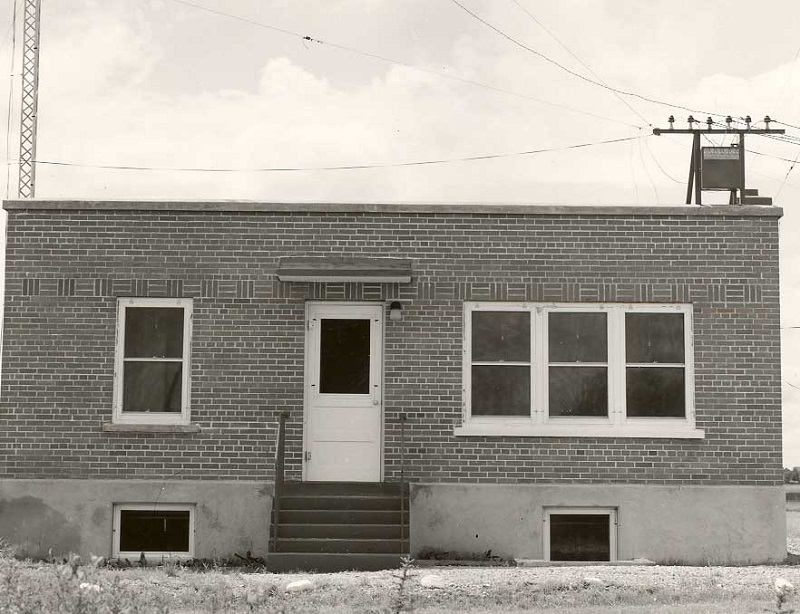
 Art Bambrick, Jean Paul Gagnon and Yvon Asselin were each in
turn in charge of this station.
Art Bambrick, Jean Paul Gagnon and Yvon Asselin were each in
turn in charge of this station.

 The clandestine operators generally used "Mk 19" sets bought on the army surplus market. A few
were very surprised to learn they had been located. As for the inspectors, some of them literally felt
the shock of action when they cut a few high voltage power lines.
The clandestine operators generally used "Mk 19" sets bought on the army surplus market. A few
were very surprised to learn they had been located. As for the inspectors, some of them literally felt
the shock of action when they cut a few high voltage power lines.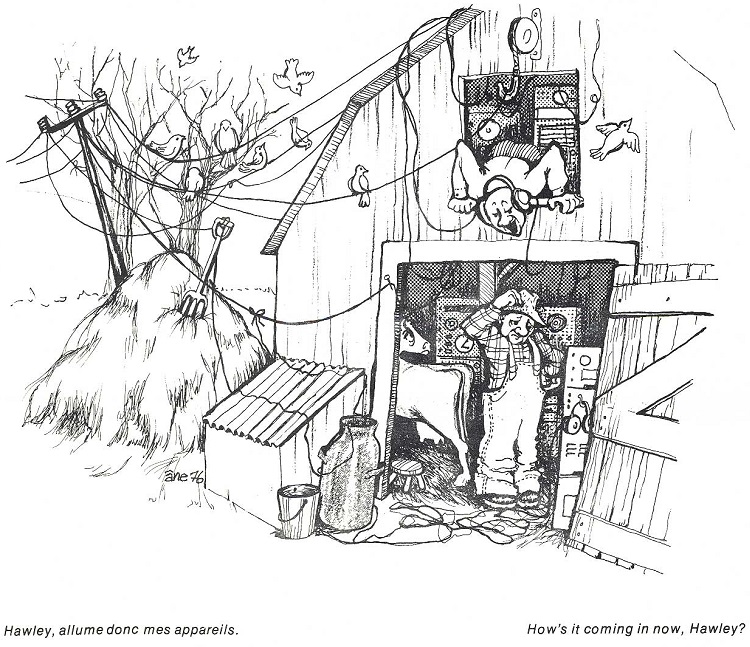
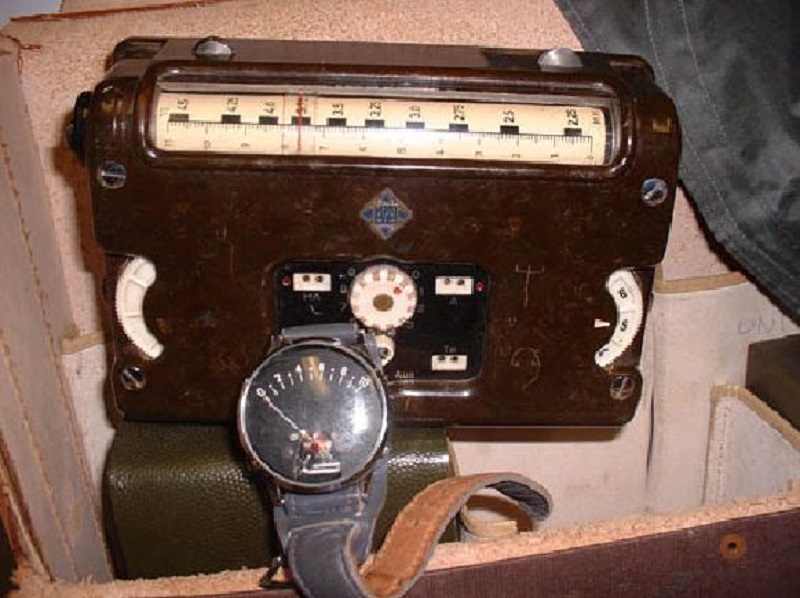
 As the technology evolved, new standards were published by the Department. The
army surplus sets and aeronautical sets such as the Lear (shown opposite) that had been
adapted for the need for portability in the forest, were changed and users ceased to use
them.
As the technology evolved, new standards were published by the Department. The
army surplus sets and aeronautical sets such as the Lear (shown opposite) that had been
adapted for the need for portability in the forest, were changed and users ceased to use
them.